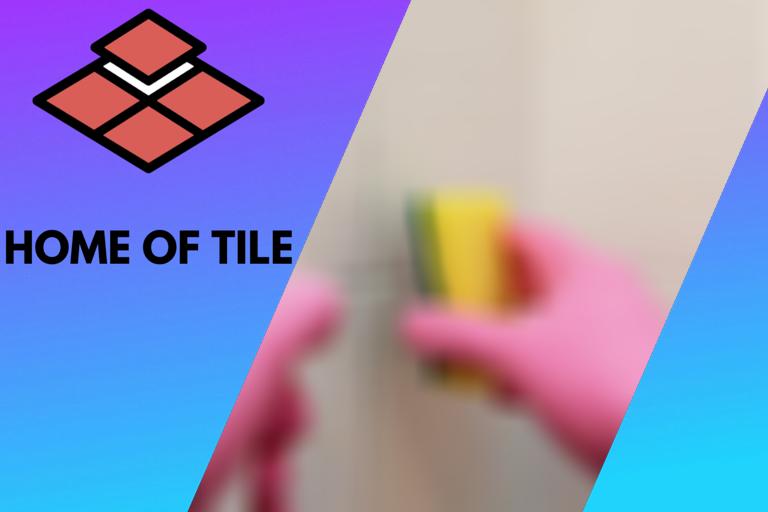How to Re-Grout Tiles. What professionals say
Tiles are a great way to take a room from nice to stunning; they add a beautiful finish to any area, whether it be a backsplash in your kitchen or a gorgeous accent wall in your shower. However, as well as being quite pricey, tiles can become a bit grimy looking when the grout gets dirty. Instead of replacing all the tiles when this happens, you can simply add some fresh grout.
Re-grouting tiles is a relatively straightforward process. Firstly, you need to grind down the existing grout with a grout saw, then thoroughly clean out the lines with an oscillating tool or a utility knife. Once all the gaps between the tiles are clean, you can add your new grout.

Now that you know how easy it is to re-grout tiles, let’s go into more detail so that you can take your tiles from dull to fabulous!
Contents
Step 1: Prepare the Area
Although re-grouting tiles is pretty simple, it can be messy and time-consuming. As you grind away at the existing grout, the debris will cause a mess and could scratch certain surfaces, such as your:
- bathtub
- basin
- kitchen countertop
The best way to make clean-up quicker and easier would be to place plastic or cloth over all nearby areas. If you’re working near a drain, then covering it with masking tape is recommended to prevent any blockages.
Once the selected areas are covered, you’re ready to start.
Step 2: Remove the Majority of the Existing Grout
In order to remove the existing grout, you will need some tools, namely:
- an oscillating tool
- a dust mask
- safety gloves
- goggles
- a utility knife
- a vacuum
The oscillating tool will remove the majority of the grout and is much faster than removing old grout by hand.
When using the oscillating tool, face the blade perpendicular to the grout. As the blade spins, you will notice the grout quickly coming away from the lines. Work slowly to ensure you don’t chip the tiles as you go.
The goal here is to remove most of the old grout, not all of it. Try to get as much grout out without damaging any of the tiles as you go. Use a vacuum to suck up the debris and make it easier to see between the tiles.
Step 3: Remove the Remaining Grout Manually
Once you have removed most of the existing grout with the oscillating tool, you can go in with your utility knife, screwdriver, or specialized grout remover tool to extract the remainder of the grout. This is a time-consuming job, so be prepared.
Scrape out any stubborn bits of grout manually, being careful not to scratch the surface of the tiles as you go. The grout should lift out fairly easily now, as the oscillating tool caused disruption to the adhesion.
Step 4: Clean the Tiles Thoroughly
It is essential to clean your tiles before regrouting. The most effective cleaning solution is a quarter cup of dish soap mixed with a gallon of water. Take a sponge and wash in between the tiles thoroughly.
Wash down the area again with a clean sponge and warm water. Allow to dry before going in with the new grout.
Step 5: Mix the Grout
Grout generally comes in powder form, to which you need to add water. Pour some grout powder into your bucket and slowly add water until you reach the desired consistency; it should look a bit like toothpaste.
If you’re grouting a small area, you can buy pre-mixed tubs of grout. If your grout comes with mixing instructions, follow them correctly.
The rule of thumb is to let the grout rest for a good 10 minutes before you start the job.
If you are having trouble with mildew and grime staining your white grout, it would be a good idea to consider a darker color; this way, the dirt won’t be as noticeable. There are various colors of grout available to match almost any color scheme.
Step 6: Apply the Grout
Now that your tiles are clean and the grout is mixed, it’s time to start filling it in. Using a grout trowel, scoop some grout onto the tiled area and push it into the gaps between the tiles. Be sure to scrape using diagonal strokes and hold the trowel at a 90-degree angle to ensure a uniform fill.
Grout should be applied in large amounts. You want to cover the entire surface with grout and then scrape away the excess. The grout will not affect the tile; you can simply wipe it off.
If you are working on a vertical surface, you should apply the grout in an upward motion to prevent dripping.
Step 7: Clean the Newly Grouted Tiles
Now that all the lines have been filled, you will need to clean them. Before the grout dries, you should take a damp sponge (not wet) and lightly brush over the tiled surface. A wet sponge will pull out the grout as you clean, which means you would have to re-grout again. Leave it to dry.
Once the grout has dried completely, you will notice a chalky film over the tiles, called haze. Don’t fret; this can be washed off easily. Take a microfiber towel, wipe away the haze, and give it a good buff. You can also use a regular towel or cotton cloth, but the microfiber towel tends to work better.
Step 8: Seal the Grout
The last step is to seal the grout. Tiles are generally used in areas where water would be, i.e., above a kitchen sink or in a shower. The problem is that grout is not water resistant and stains easily. To prevent water absorption and bacteria build-up, it is recommended to seal the grout once a year.
Various tile sealants are available according to the tiles and grout used and what area you will be sealing. For example, membrane-forming sealers are excellent for kitchen use but should not be used in the bathroom, while penetrating sealers are great for damp areas. Make sure you choose the correct sealant for your specific application.
Final Thoughts
Tiles are a great way to add an elegant look to your home or even a pop of color to your kitchen or bathroom. However, grout can stain easily, and mildew build-up can be quite noticeable due to grout being porous. Luckily this does not mean you have to replace the tiles, you can simply re-grout them, and it is easy enough to do it yourself!








